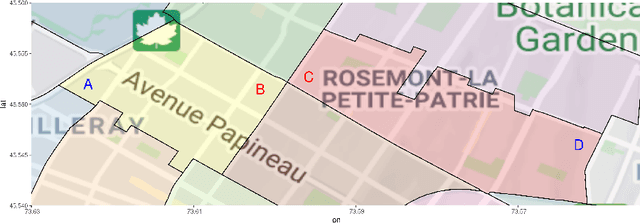Etienne Marceau
Tree-structured Markov random fields with Poisson marginal distributions
Aug 24, 2024Abstract:A new family of tree-structured Markov random fields for a vector of discrete counting random variables is introduced. According to the characteristics of the family, the marginal distributions of the Markov random fields are all Poisson with the same mean, and are untied from the strength or structure of their built-in dependence. This key feature is uncommon for Markov random fields and most convenient for applications purposes. The specific properties of this new family confer a straightforward sampling procedure and analytic expressions for the joint probability mass function and the joint probability generating function of the vector of counting random variables, thus granting computational methods that scale well to vectors of high dimension. We study the distribution of the sum of random variables constituting a Markov random field from the proposed family, analyze a random variable's individual contribution to that sum through expected allocations, and establish stochastic orderings to assess a wide understanding of their behavior.
Geographic ratemaking with spatial embeddings
Apr 26, 2021



Abstract:Spatial data is a rich source of information for actuarial applications: knowledge of a risk's location could improve an insurance company's ratemaking, reserving or risk management processes. Insurance companies with high exposures in a territory typically have a competitive advantage since they may use historical losses in a region to model spatial risk non-parametrically. Relying on geographic losses is problematic for areas where past loss data is unavailable. This paper presents a method based on data (instead of smoothing historical insurance claim losses) to construct a geographic ratemaking model. In particular, we construct spatial features within a complex representation model, then use the features as inputs to a simpler predictive model (like a generalized linear model). Our approach generates predictions with smaller bias and smaller variance than other spatial interpolation models such as bivariate splines in most situations. This method also enables us to generate rates in territories with no historical experience.
 Add to Chrome
Add to Chrome Add to Firefox
Add to Firefox Add to Edge
Add to Edge